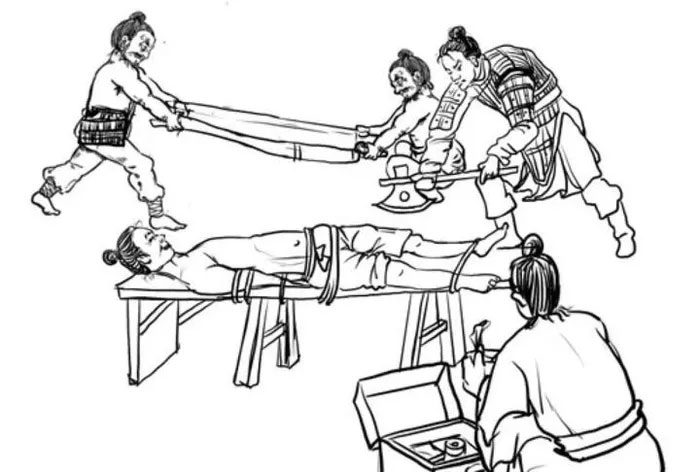Thousands of years ago in ancient China, criminals faced more than just imprisonment; serious offenses could result in the brutal punishment of “amputation.”
The amputation punishment was applied to individuals convicted of various crimes, such as evading obligations, theft, or military insubordination… and was often used as an alternative to the death penalty.
This punishment was not limited to commoners. A study published in the Journal of Archaeological Science and Anthropology detailed how two men living during the Zhou Dynasty (1050 – 221 BC) in Henan Province, central China, suffered this brutal penalty.
“Excavated evidence shows that amputations were carried out as a systematic process with neat execution techniques, along with patient care and management after the punishment to support survival and recovery,” said Dr. Qian Wang, a co-author of the study.

The tomb and skeletons of both men excavated show they likely suffered leg amputations. (Photo: SCMP)
According to the report, the bone fragments indicate that one man had his right leg amputated, while the other had his left leg removed, suggesting they were convicted of different offenses.
The amputation of the right leg was performed for more serious crimes compared to the left leg amputation. The research team also speculated that the two men might have been related.
The excavated bones showed signs of controlled healing processes. Additionally, the bone fragments exhibited signs of clean cuts, proving that the punishment was executed using medical techniques rather than repeated strikes from weapons.
“These two men, after accepting their punishment, may have returned to a normal social life and were appropriately buried upon their death,” Mr. Qian added.
The two men likely lived around 550 BC, with the man missing his right leg estimated to have died around the age of 45, while the man missing his left leg died at approximately 55 years old.
They may have lived “at a peasant level” based on their burial practices. Researchers, after analyzing historical texts, concluded that they were likely low-ranking officials or scholars.
The research team also considered other reasons for leg amputations, such as congenital defects, medical treatment, or ritualistic amputations.
However, researchers found no evidence of other body parts adapting to congenital defects, nor any proof of ritualistic sacrifices.
This suggests that the most likely reason for the leg amputations of these two men was to minimize the spread of disease, treat post-accident injuries, or violence.
Nonetheless, after thoroughly assessing the injuries and the level of violence, and based on the historical and archaeological context, “the leg amputation punishment appears to be the most rational explanation.”
The research team was also uncertain about the crimes committed by these two men.

Amputation is one of the most brutal punishments that prevailed in ancient China. (Photo: SCMP).
The amputation punishment is believed to have first appeared in China during the Xia Dynasty (2070 – 1600 BC). Historians analyzed historical documents from “Rites of Zhou,” and a chapter of this ancient text describes the punishments during the Xia Dynasty, which included amputations.
These texts are corroborated by artifacts found at the Erlitou excavation site in the Yellow River valley.
During the Western Zhou period, when the two men lived, recorded cases of amputations were widely documented, and this custom became institutionalized.
“In these two cases, the individuals who underwent amputations survived due to the systematic coordination between the execution of the punishment and medical care. Their socio-economic conditions being higher than normal also aided in nutrition and adaptation to their new life,” Mr. Qian noted.
Although there are no historical data to definitively assert the mortality rate caused by this punishment, Dr. Qian pointed out evidence suggesting a high survival rate for victims.
The study indicates that people during the Western Zhou period had some knowledge of pain relief. It seems that individuals at that time were knowledgeable enough about anatomy to perform procedures such as ligation, wound suturing, and pain management after execution.
“Since leg amputation as a punishment was a common measure, there must have been an established procedure along with post-execution management protocols,” Mr. Qian stated.
The amputation punishment continued to exist in China in the following centuries before being abolished in 167 BC during the reign of Emperor Wen of Han (180-157 BC) of the Han Dynasty (202 BC – 9 AD).
However, this practice does not seem to have been completely eradicated, as a skeleton from the Qing Dynasty (1644 – 1911) was found with both legs amputated.
Other brutal punishments for lesser crimes were also common during the Western Zhou period, including tattooing the character “criminal” on a person’s face, castration, or cutting off the nose of offenders.



















































